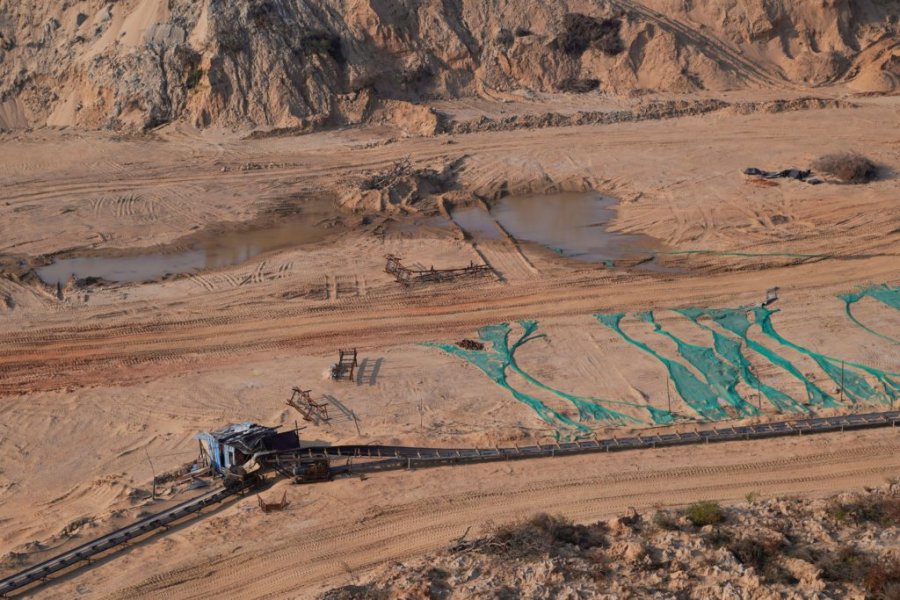The Damages of Sand Shortages
As the need for sand has rapidly increased in the 21st century, its value has as well. Organized crime structures have seized the opportunity to make money off of this very needed resource.
Poyang Lake after being cleared for sand mining.
February 8, 2021
Sand is a lot more essential than you might think. In fact, it is the second most used natural resource behind water. Sand is used primarily to be made into concrete and glass. The problem is that not just any sand can be used to do so.
Although large amounts of sand are everywhere, and you could probably fill a bucket up with it for free, the shortage of sand lies in the specific types. According to Business Insider, sand that has been eroded by wind, which is what we have in Arizona deserts, is nearly useless because of its smooth edges that cannot be made into concrete. Useful sand can only be collected from places where water has eroded rocks to create sand, such as rivers, lakes, and seashores.
Another explanation of the decreasing sand is the growing population. The population is predicted by the United Nations to increase to 9.8 billion by the year 2050. In just 30 years the population is expected to increase by over 2 billion. This means that as the population grows exponentially, the use of materials will need to as well to support everyone, an impossible endeavor. We currently use 50 billion tons of sand each year and an increase in construction will result in an unsustainable increase in demand.
Along with population increase comes environmental concerns of sand shortages. Dredging the ocean floor for sand will destroy the ecosystem. In a study published by Elsevier, it was proven that the sand that is artificially removed from ocean floors causes damage to coral living in the area. Another way to get sand is by mining it from rivers, but this will lead to sand clouding up the water which can cause animals that live in the river to die. This causes an imbalanced ecosystem which can create all sorts of problems including a lack of food and the endangerment of animal and plant species. Because of these environmental issues, naturally getting the licenses to clear rivers or drench the ocean floor is quite difficult. As a result, many people have turned to illegal ways to get and sell sand.
The name ‘Sand Mafia’ has been given to the organized crime structure in some parts of Northern Africa and Latin America. According to BBC, these organizations often force children into slavery and force them to mine sand. This can be really dangerous for children because of sand cave-ins that can cause suffocation. Not only does this crime harm these children, innocent civilians and environmental activists living in these areas have also been killed or threatened. Pascal Peduzzi of the United Nations Science Division said that while on an investigation trip in Jamaica, “We went to a small fishing village, and the villagers told us that one night some people came with trucks, armed with guns, and they stole their beach away. I was shocked that just for sand, people were ready to kill.” Vince Bieser of the BBC has said that the crimes go unpunished because, like other organized crime structures, members pay off corrupt police and thus suffer no consequences for the harm they are causing.
As for solutions to solving the sand shortage, reducing unnecessary construction, especially artificial islands made to host resorts like the “Astronaut Islands” in California and the “Palm Tree Islands” in Dubai is vital. Another potential idea for reducing the shortage of sand is to artificially form sand from stones. FTFMachinery has developed a machine that successfully does just that; however, it has not yet been used on a large scale. Regardless of how efficient the product currently is, it certainly holds a promising future that is worth looking into. If successful on a large scale, it could ultimately diminish the value of sand which would decrease the size of the “Sand Mafia,” as well as help stop the damaging environmental effects of sand mining.












